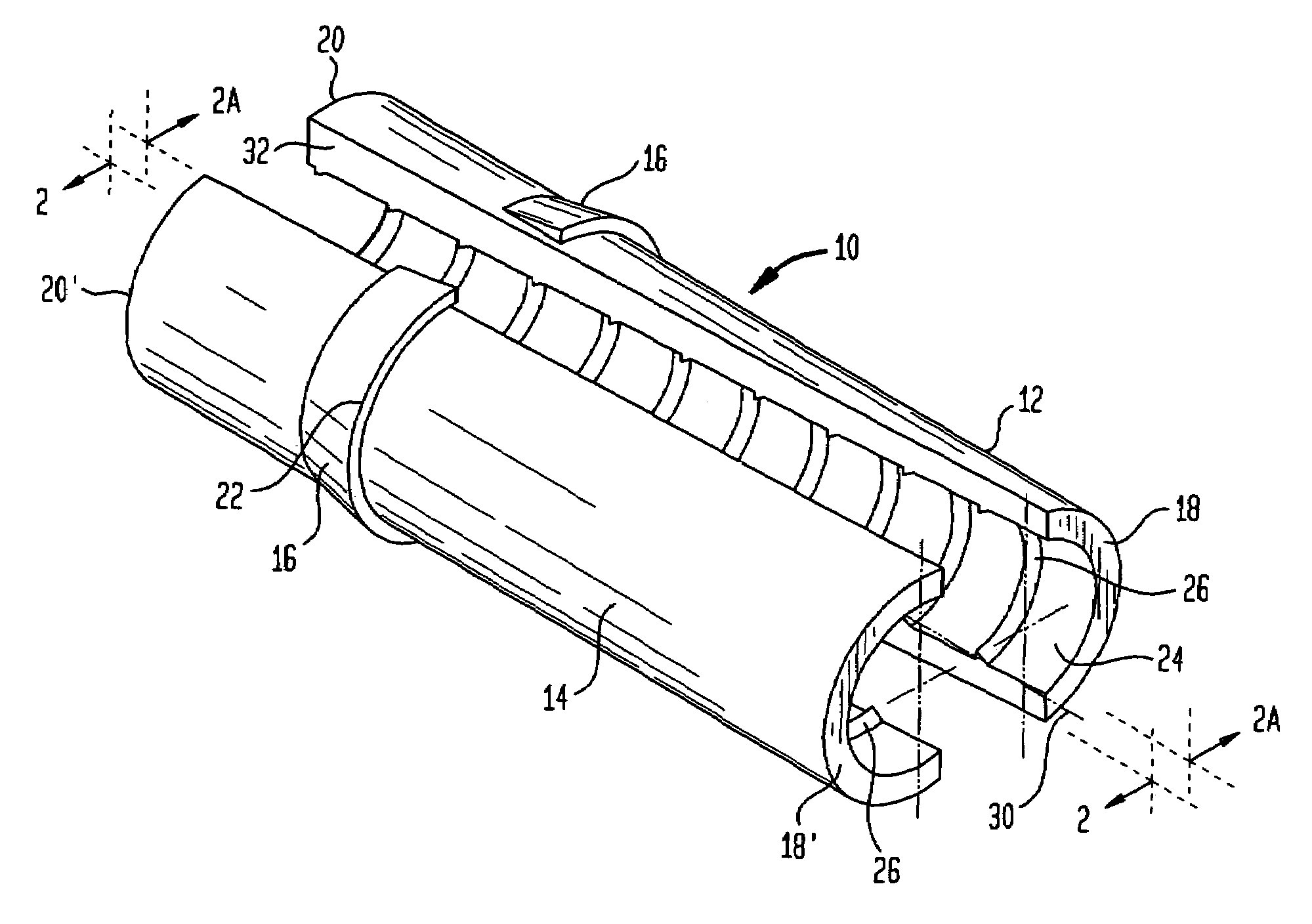Porous tendon anchor
a tendon and anchoring technology, applied in the field of tendon anchoring, can solve the problems of affecting the healing or loosening of the interference fixation, affecting the healing effect, and causing the morbidity of the donor knee joint,
- Summary
- Abstract
- Description
- Claims
- Application Information
AI Technical Summary
Benefits of technology
Problems solved by technology
Method used
Image
Examples
Embodiment Construction
[0027]Referring to FIGS. 1 and 1a there are shown isometric views and side views of the two-piece tendon anchor generally denoted at 10. Tendon anchor 10 consists of a first part 12 and a second part 14 which are generally wedge-shaped such that movement of part 12 with respect to part 14 increases the overall diameter of the anchor 10. Each part 12 and 14 includes an outer circumferential ridge 16 located intermediate a first end 18 and 18′ of the first and second part 12 and 14 respectively and a second end 20 and 20′ of 12 and 14 respectively. Ridge 16 has a relatively sharp edge 22 designed to imbed itself in the bone as the anchor 10 expands by the relative movement of part 12 with respect to part 14. In first part 12 end 20 is the thicker wedge wall and in second part 14 end 20′ is the thicker wedge wall. Ends 18 and 18′ are the thinner wedge wall since the inner diameter of the anchor is larger at this end. The circumference of parts 12 and 14 is tapered. End 18′ is the large...
PUM
 Login to View More
Login to View More Abstract
Description
Claims
Application Information
 Login to View More
Login to View More - R&D Engineer
- R&D Manager
- IP Professional
- Industry Leading Data Capabilities
- Powerful AI technology
- Patent DNA Extraction
Browse by: Latest US Patents, China's latest patents, Technical Efficacy Thesaurus, Application Domain, Technology Topic, Popular Technical Reports.
© 2024 PatSnap. All rights reserved.Legal|Privacy policy|Modern Slavery Act Transparency Statement|Sitemap|About US| Contact US: help@patsnap.com










